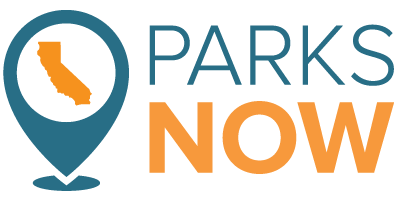In the aftermath of George Floyd’s killing, conversations about policing are getting more attention than ever. Many of these conversations have focused on city, federal, and school police, and overlook an important space where policing continues to present challenges and threats to communities of color: our parks and public lands.
A few years ago, Latino Outdoors organized an outing for Latinx families in the Bay Area that included a meet and greet with regional park rangers. It was an opportunity to understand the role park rangers play in caring for the public lands that youth and their families visit. What resulted was an honest conversation about the negative interactions Latinx youth and their families often experience when visiting parks.
One of the young participants told Parks staff that when he visits parks, “the first thing I hear from you is about something I’m in trouble for,” instead of being made to feel safe because of the rangers’ presence.
For many people of color, this is a familiar experience when it comes to interacting with law enforcement officials. “When outdoor environments are already new, unfamiliar and hard to access, concerns about personal safety and health add yet another layer to the inequities that people of color experience,” says José González, Founder of Latino Outdoors. “In addition to perceived safety concerns about a new natural environment, community members also contend with safety concerns from policing in those spaces.”
Parks Now members have long advocated actions that would enable California’s State Parks system to be part of the solution.
One example comes from the recommendations of the Parks Forward Commission, which recommended eliminating the requirement of peace officer certification to advance to top field leadership positions, which was subsequently implemented by the Department of Parks and Recreation through its Transformation work.
This important shift not only removes a constraining policing element from our parks, but it also opens up State Parks’ leadership pool to include talented leaders with the diverse expertise needed to manage our parks, serve visitors, and create long-term systemic change. It is important that “park staff should reflect the local community, so visitors feel safe,” says Sandra Celedon, President and CEO of Fresno Building Healthy Communities.
Movements to reimagine community safety also bring to the fore much-needed attention to how cities fund police departments--and whether those funds could better serve communities when directed toward schools, clinics, housing, and, of course, our parks.
“Parks are an anchor for Black and brown communities in Stockton,” says Sammy Nuñez, Executive Director of Fathers and Families of San Joaquin. “I’m not sure if the common person sees parks as a component of a peace plan. In our community, we don’t see a sustainable peace plan without it.
In Stockton and cities across America, we must see a move away from aggressive law enforcement in our parks, which are beloved community resources and have become essential . Only then can we truly crystallize the vision that parks are for all.

